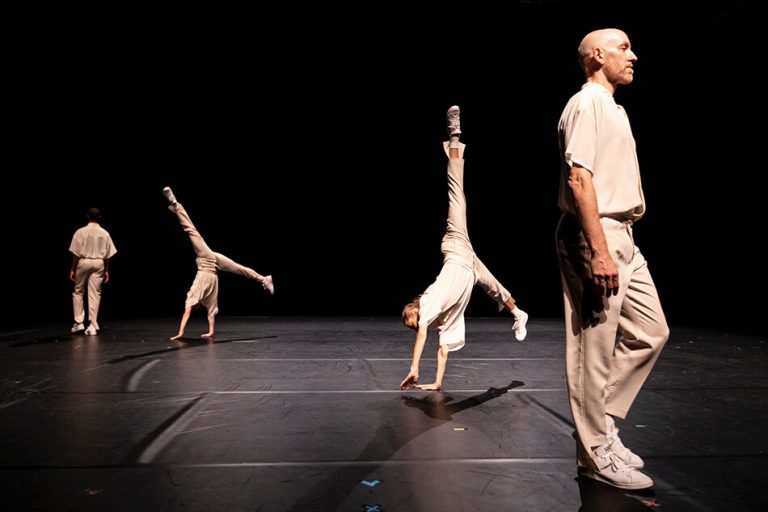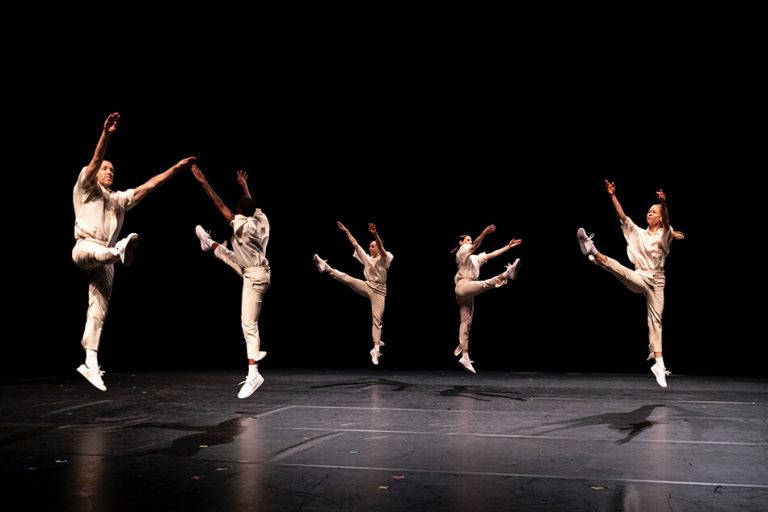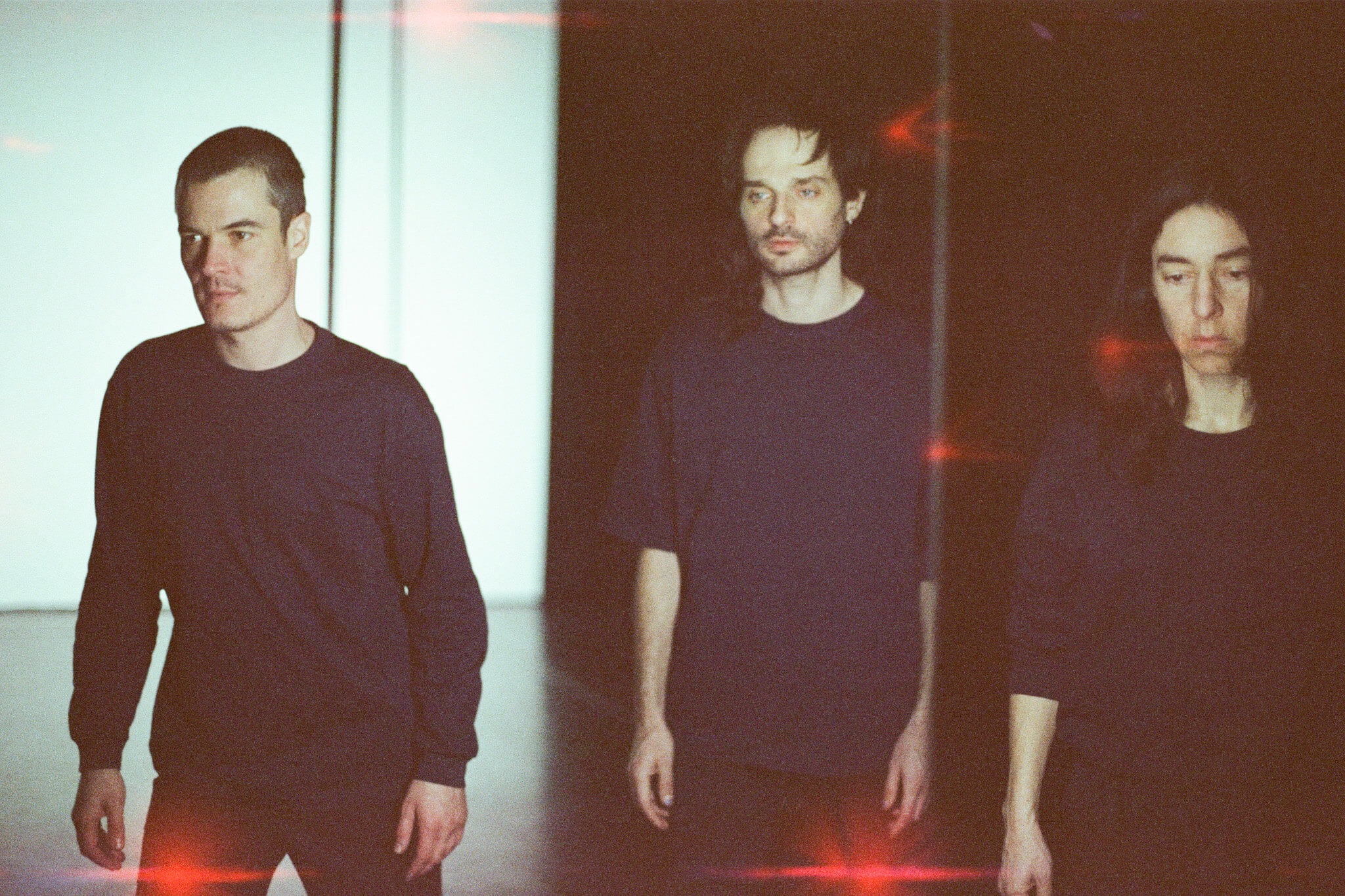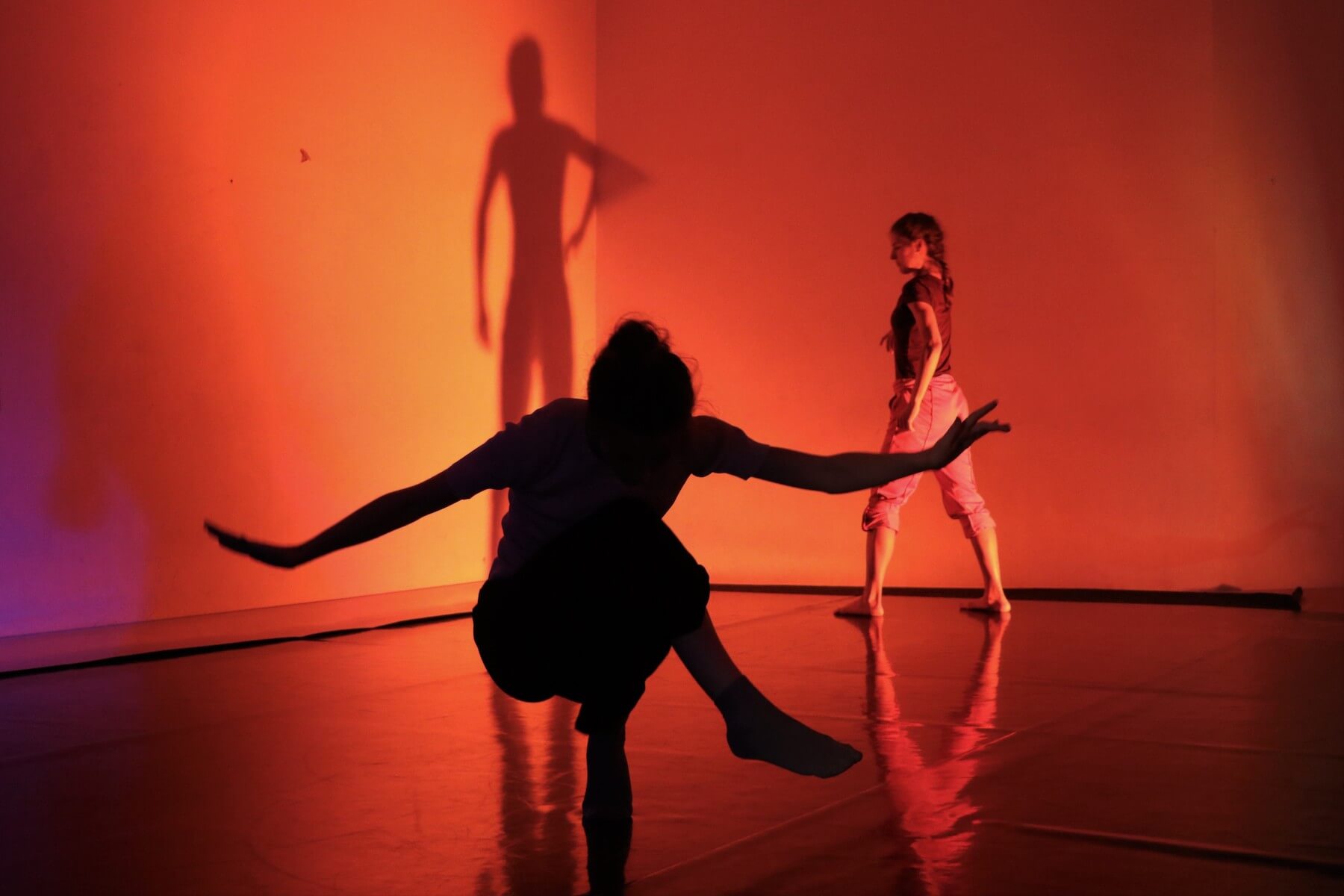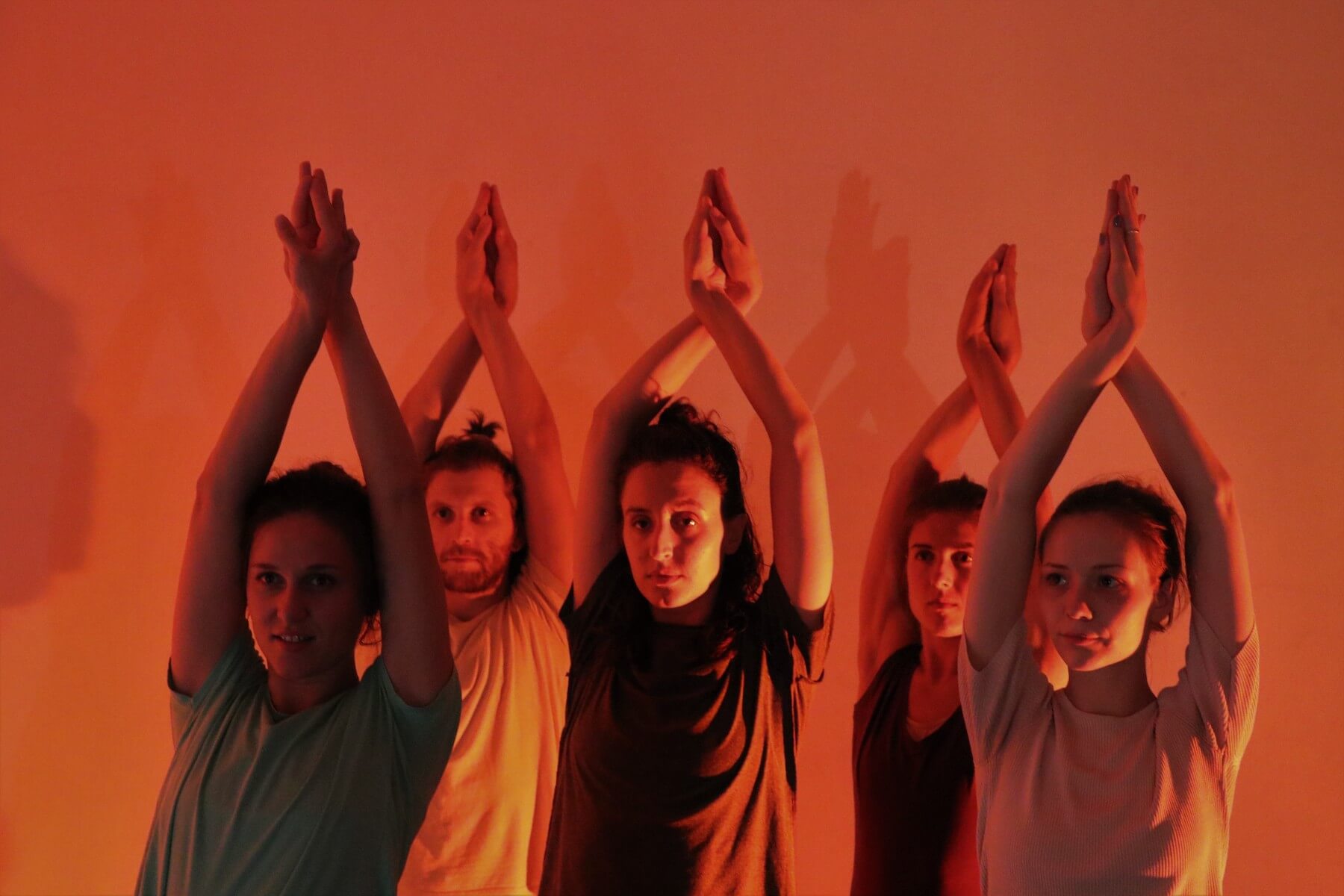

Radical vulnerability / 15th Kondenz Festival of contemporary dance and performance
This year, the 15th Kondenz festival of contemporary dance and performance is marked by the motto radical vulnerability. Through the program that includes performances, lectures, presentations and conversations, we want to talk from the position of independent dance scene, the position of individuals who choose to work on that scene, the position of a collective that struggles to maintain and preserve the collective spirit, the position of citizens in society that is falling apart, to talk about how radically threatened we all are and how important it is to show our sensitivity, our weaknesses, but also our passion to not give up.
We are making the festival for the 15th time, we are opening a window into its “backstage” where the local dance scene thinks, talks, fights, proposes, invents, creates, and negotiates. After so many years, it is more than obvious that the art that we look at / create / share / invite in such a space is, in fact, desperately trying to point out that vulnerability, whether it uses the language of (radical) sensitivity, sensuality, emotional vulnerability or the affective, or speaks directly political and activist language, addressing and engaging with concrete social and political phenomena and processes… With such artistic practices and with such a discourse around them, we framed the field in which we operate, trying to maintain it, support it and encourage it, trying to understand it, to hear it even though it whispers, to read its lips. And when we doubt that we have understood it well, we keep wondering what it wants to say, what to achieve…
Are we today as bodies, sentient machines, and as communities, groups, alliances, couples… radically vulnerable, on the edge of survival of this form of sociability? Are we a badly wounded body that needs a look full of love, another touch, a beautiful memory, a kiss, a brace, before it closes its eyes forever?
With this year’s program, we therefore return to the past by evoking the work of two great female artists, Lucinda Childs and Katalin Ladik, we expose all our weaknesses and vulnerabilities as in the works About exhaustion, Vulnerable Bodies, Trança, Why not(?), and rush into a future that is brave and feminist, bespoken through the performances To speak light pours out or the work and The sound they make when no one listens. The program presents a new local author (Stefan Veselinović performs for the first time at Kondenz with a work created in collaboration with Romain Lafon-Pachot) and continues to promote our regional scene and the dialogues we have with it. Through the (Non)Aligned Movements project and the Nomad Dance Academy network, we place our work in the context of the post-Yugoslav cultural space, confirming its deep roots in the way we produce and organize dance as a social practice.
All the experiences and knowledge acquired during these 15 years condense into a radical vulnerability that produces a different temporality, one in which being together, creating a fragile but important affective alliance is a political act. That act, a collective act, always comes with countless challenges and obstacles, giving-ups, coming-backs, doubts and suspicions, difficult rejections. But it is undoubtedly the most important result of that work.
“Without community there is no liberation, only the most vulnerable and temporary armistice between an individual and her oppression.” Audre Lorde
Marijana Cvetković
PROGRAM
Blurring the Background: Black Performance as Political Ontology

Thomas DeFrantz, choreographer and theoretician, New York
23.10. @18:00
Magacin
Kraljevića Marka 4 →
Black Performance arrives as a ontological nodule of dance as politics. Of course, as Black Performance emerges in the crucible of capital and disavowed humanity; the dances fomented within the formation of Black life and Black thought are inevitably constituent of political agency and political address. This paper asserts the centrality of Black Performance as, not a political ontology, but the matter and immanence of political ontology itself. The double-bind of black performance as the opening to contemporary global political formations is considered alongside questions of aesthetic value, skill, practice, and expertise. And the formation of a commons of performance, born of a radical disavowal from mainstream formations of ‘the human’ that allow many to gather in the places of shared and adjacent vulnerabilities.
Studies of Elementary Compositions: About the work of Lucinda Childs /// lecture

Rok Vevar, theoretician and dance archivist, Ljubljana
24.10. @18:00
UK Vlada Divljan
Mitropolita Petra 8 →
In a lecture Studies of Elementary Compositions, I will introduce the choreographic oeuvre of Lucinda Childs with a retrospective look at her Judson Dance Theater period (1962-1964) with some extensions up until 1968 in order to understand where her work was heading to after she returned to the stage in 1973 and made pieces that are part of Works In Silence (1973-178). What followed the period of mostly short choreographic works is to this day considered the choreographic signature of Childs with emblematic Dance (1979) in collaboration with Philip Glass and Sol Le Witt as well as Available Light (1983) with John Adams and Frank Gehry. The momentous piece that helped to change Childs’ work from the shorter forms to feature-length pieces was her collaboration with Robert Wilson and Philip Glass on the opera Einstein On The Beach which was presented at BITEF in September 1976.
WORKS IN SILENCE – Lucinda Childs
Dance On ensemble
+ after-talk with the authors
Critical Practice (Made in Yu)
Choreography: Lucinda Childs
Staging: Ty Boomershine
Cast: Javier García Arozena, Alba Barral Fernández, Ty Boomershine, Emma Lewis, Gesine Moog, Lia Witjes-Poole
Lighting: Martin Beeretz
Sound: Mattef Kuhlmey
Costume: Alexandra Sebbag
Production: Dance On / Bureau Ritter
Co-production: STUK House for Dance, Image and Sound / Münchner Kammerspiele
Funded by the Doppelpass Fund of the Kulturstiftung des Bundes, Die Beauftragte der Bundesregierung fur Kultur und Medien
Co-funded by the Creative Europe Programme of the European Union
24.10. @20:00
UK Vlada Divljan
Mitropolita Petra 8 →
The WORKS IN SILENCE offer insight into a decisive development phase of one of the most important choreographers of the 20th century.
This collection of early works from the extensive repertory of Lucinda Childs is specifically exciting both because of its rarity and due to its importance in the dance field. Most of these works have not been seen since they were shown in the 1970’s. In these dances Lucinda has left behind props, objects, the spoken word, symbolic movement, all hallmarks of the era of the Judson Dance theatre and chosen to focus on the passage of the body through space. To zero in on the essence of initial movement, which, for Childs, was the act of walking. From walking to running, to changing direction, to skipping, to leaping, illustrating the evolution of movement into dance through the choreographic vision of Lucinda Childs.
“I think it’s very musical for dancers to share a pulse,” she says. “They have to listen to each other. That’s what a musical ensemble does. They tune in to each other in a very precise way.” This is a rare entrance into a crucial period of transformation by one of the world’s most important choreographers and directors, who’s impact on both the world of the visual arts and influence on a generation of choreographers cannot be overstated. These works express a fragility and a humanity that is a perfect example of the value of experience, and ideally suited to a group of dancers that bring with them their own abundant histories and knowledge. In the act of stripping away all artifice and theatricality, the beauty and truth of wisdom is confronted, shared, and exposed.
4IMNNML
(For I am an Animal)
Stefan Veselinović & Romain Lafon-Pachot
Choreography and performance: Stefan Veselinović, Romain Lafon-Pachot
Costumes: Miloš Janjić
External eye: Ariana Aragno
Production: Cie Helice (Toulouse-Blagnac), CDCN – La Place De La Dance, Tuluz
25.10. @18:00
UK Vuk
Bulevar Kralja Aleksandra 77a →
Stefan Veselinović, contemporary dance artist, and Romain Lafon-Pachot, theatre and voice artist, got together in exploring the field of gramograms and the means of putting the body-language relation on stage.
Gramograms, which are seemingly random chains of letters / figures that make sense when pronounced separately (a title, as an example), make a perfect ground for exploring various linguistic combinations by discovering their constructing elements.
In this piece, the two artists explore the corporeal aspect of interacting with letters and relations that this word-play might bring up, hoping that by going back to basics some new perspectives and inquiries arise.
WHY NOT (?)
(Non)Aligned Movements – (Non)Aligned Programme
Ivana Kalc & Igor Koruga
+ after-talk with the authors
Critical Practice (Made in Yu)
Performance: Ivana Kalc, Igor Koruga
Music: Luka Mejdžor
Design: Andrea Žic Paskuči
Photography: Karlo Čargonja
Production: Kabinet
Co-production: Stanica Servis za savremeni ples, Hrvatski kulturni dom na Sušaku, Rijeka;
Financial support: Ministarstvo kulture i medija Republike Hrvatske, Grad Rijeka, Ministarstvo kulture i informisanja Republike Srbije
Thank you: Kamov rezidencijalni program Rijeka
25.10. @21:00
Atelje 212
Svetogorska 21 →
Project Why not (?) searches for the embodiment and definition of today’s (hopeless, isolated, scared, over-identified) body of the individual and the affective space of care between (at least) two people/entities, as a practice that can be further developed with the collective (audience). In such a framework, the authors specifically investigate the technique of unison, i.e. “sameness” as a performing means of dance and as a cultural-artistic practice that carries with it an important historical framework of application: from the multi-purpose aesthetic-poetic application in artistic works of different epochs in the history of dance development (in the 20th century) to a targeted ideological and technological tool for shaping the social body of various social orders (communism, fascism, capitalism, etc.). The goal of researching unison in the choreographic sense is to study the space for creating glitches through which differences on the affective, cognitive, physical level and time will be articulated, in the physical sense, to articulate multiple identity transformations as spaces of different social and physical powers and abilities, and thus also as a basis for political, engaged and critical association and co-existence today.
Presentation and a talk about the dance journal Kretanja from Zagreb

Nina Gojić, Ana Fazekaš
Kretanja (Movements in English) magazine is the only bilingual Croatian magazine entirely dedicated to the art of dance. Since 2002, it has been published by the ITI Croatian Center and is published twice or once a year as an independent issue or two issues, while the editorial team strives to equally cover current topics from contemporary dance and ballet. The intention of the magazine is to promote dance and somatic culture in the social context within which (and sometimes despite which) dance lives, to establish a place for the development of dance criticism and theory, or to ecourage local and regional dance theory. The publication aims to systematically and qualitatively follow the movements on the Croatian dance scene, in a way to “archive”, write down, preserve dance performances and events, at least through written texts as their possible, flawed, but potent trace, and to open a space for reflection on dance events and performances, which will serve as information for the audience, and an important source of critical readings for choreographers and dancers about their own work.
26.10. @17:00
Magacin
Kraljevića Marka 4 →
Since the change in the composition of the editorial board in 2019, the magazine has opened up to more experimental ways of writing about dance, more intense transdisciplinarity and research into the textual space as a performance space, and due to more recent cuts in funding, a conceptual-design solution had to be found so that the quality and number of texts remain uncompromised. The most recent members of the editorial board, Ana Fazekaš and Nina Gojić, in a moderated conversation with the audience, will present their work on the magazine in relation to their different experiences, interests and starting points, and will talk about editorial policies, old and new challenges of writing about dance, as well as reception by the local dance scene. For interested readers, the Kretanja archive is also available online: hciti.hr/casopis-kretanja.
The sound they make when no one listens
(Non)Aligned Movements – (Non)Aligned Programme
Thiago Granato
+ after-talk with the authors
Critical Practice (Made in Yu)
Concept, Artistic Direction and Choreography: Tijago Granato
Direction Assistance and Co-creation: Sandro Amaral
By and with: Arantxa Martinez, Roger Sala Reyner i Thiago Granato
Lighting Design: Claes Schwennen
Sound Design: David Kiers
Sound Design Assistance: Andrea Parolin
Dramaturgical Advice: Lisa Stertz
Production Management: Sandro Amaral
Supported by: TanzFabrik Berlin i Teatro Municipal do Porto/ DDD – Festival Dias da Danca
Co-production: Tanz im August / HAU – Hebbel am Ufer Berlin i Le dancing CDCN Dijon Bourgogne Franche-Comte
Funded by: The Senate Department for Culture and Europe of Berlin
26.10. @20:00
Bitef theatre
Skver Mire Trailović 1 →
In times of an ecological, political and personal crisis, Brazilian choreographer Thiago Granato explores the act of listening. Three performers delve into conscious listening mechanisms to perceive movements and non-movements, and unravel underlying structures of power and control. In a disorientating spectrum where sound and image sources intermingle, they amplify their sonic and visual sensitivity in order to extend the limits of their own bodies and the journeys by which they figure themselves together in the world.
The research on this piece started during the residency StationOne in Belgrade by the Station Service for contemporary dance in 2019.
Vulnerable Bodies
(Non)Aligned Movements – (Non)Aligned Programme
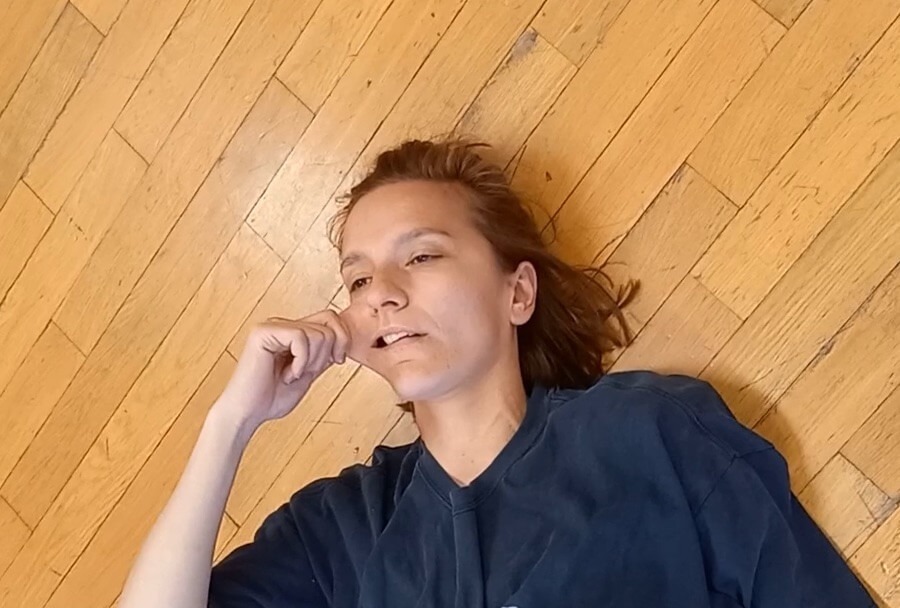
Ana Jelušić
+ after-talk with the authors
Critical Practice (Made in Yu)
Choreography: Ana Jelušić in collaboration with Marta Krešić and Nina Gojić
Dramaturgical support: Nina Gojić
Duration: 45 minutes
The work is supported by the Ministry of Culture and Media of the Republic of Croatia and the City of Zagreb
27.10. @20:00
Magacin
Kraljevića Marka 4 →
This work created in collaboration of choreographer Ana Jelušić, dancers Marta Krešić and dramaturge Nina Gojić, deals with the ways we look and with what we see in this that we look at, relying on the haptic material of the choreographed touch. Using the hand as a tool to question the relationship between being-a-subject and being-an-object, the performers employ it to make it do something to the rest of the body, or on the contrary, the rest of the body moves the hand and “makes it touch”. In this interplay of moving and making it move, Vulnerable Bodies explore the mechanics of movement that opens questions of agency, consent, invitation, and the range between pleasure and violence.
By changing the way in which we visually perceive, the work complicates what is seen and how the audience participates in the viewing. In Vulnerable Bodies, language is the third hand that enters the choreography and tries to “determine” this experience and thus opens a space for experiencing the role of language as a means of manipulation.
To Speak Light Pours Out
Kate McIntosh
+ after-talk with the authors
Critical Practice (Made in Yu)
A project by Kate McIntosh
In collaboration with Ghyslaine Gau, Arantxa Martinez, Anja Müller, Stina Fors
Light design: Minna Tiikkainen
Sound design: Stefan Schneider
Stage realisation & studio assistance: Anda Skrejane
Music composition: Katharina Ernst, Beatrice Graf
Text by or inspired by: a.o. Season Butler, Jo Randerson, Rebecca Tamás, Bek Coogan, Paul B. Preciado, Tim Etchells, Astrid Korporaal, Elders of the Hopi Nation, Alice MacKenzie, Ebba Petrén
Artistic advice: Tim Etchells, Sarah Parolin
Production direction: Sarah Parolin
Light, sound, stage direction: Michele Piazzi
In collaboration with: Hanna Kritten Tangsoo
Sound: Paul Beauchamp
Administration: Laura Deschepper
Cooks: Hìla Lahav, Silvia Feliziani, Wim May
A production by S P I N vzw
S P I N is structurally supported by BUDA Kunstencentrum for the period 2017 – 2021.
Co-produced by: Kaaitheater (Brussels), Vooruit Kunstencentrum (Gent), BUDA Kunstencentrum (Kortrijk), PACT Zollverein (Essen), Künstlerhaus Mousonturm (Frankfurt Am Main), Residenz Schauspiel Leipzig (Leipzig), Black Box teater (Oslo), BIT Teatergarasjen (Bergen), Rosendal Teater (Trondheim), SPRING (Utrecht), Wiener Festwochen (Vienna)
Funded and supported by: Vlaamse Overheid, Vlaamse Gemeenschapscommissie NATIONALES PERFORMANCE NETZ Coproduction Fund for Dance, which is funded by the Federal Government Commissioner for Culture and the Media
Residencies: Tanzfabrik (Berlin), Centrale Fies_Passo Nord (Dro)
Thanks: Hans Bryssinck, Diederik Peeters, Laura Deschepper, Elisa Demarré, Josh Rutter, Gäel Santisteva, Lazara Rosell Albear, Pieter Ampe, Ntando Cele, Jonathan Bepler, Steve Heather, Andy Wright, Marc Lohr, Kazehito Seki, Fritz Welch, Daria Gatti, Daniel Blanga Gubbay, Daniela Bershan, Valentina Desideri, Emily Beausoleil, Jacopo Lanteri, Lola Rubio, public in private studio (Berlin)
28.10. @20:00
Studentski kulturni centar / Velika sala
Kralja Milana 48 →
They say when we’re all in the same space listening together, our heartbeats might end up synchronizing. But our breathing will not, our breathing will stay polyrhythmic.
They say listening might be the most complex of all human behaviours.
To listen is a state of tension.
(Listening across difference.)
(Listening further than you can see.)*
They say when we’re all in the same space listening together, our heartbeats might end up synchronizing. But our breathing will not, our breathing will stay polyrhythmic.
They say listening might be the most complex of all human behaviours.
To listen is a state of tension.
(Listening across difference.)
(Listening further than you can see.)*
To Speak Light Pours Out is an invitation to enjoy the sharp energies of positive disturbance and resolute possibility, a shout-out to the lust for transformation, resistance, and new shapes of being.
…like everyone, everywhere, was getting what they wanted.**
She pushes her fingers into the mud and listens as hard as she can, until sometimes the mud makes its way up her throat and out of her mouth.
The words are wet and rich and full of power. Words that makes worlds.
(To name, to change, to strange.)***
*To Speak Light Pours Out (quote: Kate McIntosh)
**To Speak Light Pours Out (quote: Rebecca Tamás)
***To Speak Light Pours Out (quote: Rebecca Tamás, Kate McIntosh)
Trança
Thiago Granato
+ after-talk with the authors
Critical Practice (Made in Yu)
Concept, direction, choreography and performance: Thiago Granato
Invited choreographers (interlocutores): Cristian Duarte & João Saldanha
Direction assistance and co-creation: Sandro Amaral
Original track and sound designing: Márcio Vermelho
Costume adviser: Paula Ströher
Duration: 50 minutes
29.10. @12:00
Galerija Legat Milice Zorić i Rodoljuba Čolakovića
Rodoljuba Čolakovića 2 →
Trança is an invitation to a tactile excursion where sound and movement intertwine on vertiginous surfaces and temporalities. Through a choreography of hands, Thiago Granato accelerates transformation processes where different forces are translated into signs, promoting an investigation on the body’s power to create contexts that shape new ways of life.
This piece is the second solo in a trilogy which is a choreographic document part of a larger body of work entitled Choreoversations, a research on different imaginary collaborations between dead and living choreographers, as well as those not yet born.
This project was awarded by Prêmio de Dança Klauss Vianna 2014.
About exhaustion or floating beyond one’s limits
Marko Pejović
+ after-talk with the authors
Critical Practice (Made in Yu)
Production: Grupa „Hajde da…“
Concept, dramaturgy, and politics of the movement: Marko Pejović
Choreography and performance: Ana Obradović, Anđela Žugić, Isidora Poledica, Miloš Janjić, Simonida Žarković
Choreography mentoring: Isidora Stanišić
Costume designer: Boris Čakširan
Music: AKMV-18 – Hamartia, Studiob Noir – Our little Hearts Like Saturn, Parvus Decree – L’Autre Monde (Oneirscopic MIix)
Support: Ministarstvo kulture i informisanja Republike Srbije, Kulturni centar „Magacin“, Festival na sopstveni pogon, Kondenz festival, Kulturni centar Zrenjanin.
29.10. @20:00
Centar za kulturnu dekontaminaciju
Birčaninova 21 →
It was as if there had never been a rest. It was as if we were always walking and running, without stopping and without mercy. It was as if we feared what would happen if we stopped. That moment of silence and stillness. Like a kind of death. That is why we must walk further, to prove that we are alive, that others see us, and that they will not erase us from their memories.
The performance On exhaustion or floating beyond limits was created within the project “Regularly in the zone of unlivability”, which tries to focus on how the conditions of life, social, political, economic, working… bring us to a state of constant exhaustion that becomes a regular occurrence. The project explores how by accepting these conditions (for which we seem to have no choice), we participate in our own exclusion from life and are left in the zone of “unlivability”. Five performers of the younger generation, examining their sources of exhaustion, ask whether we have the strength to resist by pulling out and offer the audience the possibility of collective stillness during the performance.
Video for the dance history: Interview with Ana Ignjatović Zagorac /// a discussion with Milica Ivić and Ana Ignjatović Zagorac
(Non)Aligned Movements – (Non)Aligned Programme

Milica Ivić
+ after-talk with the authors
Ana Ignjatović Zagorac, Milica Ivić
Author: Milica Ivić
Camera and sound: Aleks Zain
Production: Stanica Servis za savremeni ples / Nomad Dance Academy
30.10. @17:00
Magacin
Kraljevića Marka 4 →
In the frame of the project (Non)Aligned Movements and its program dedicated to creation of the Balkan digital archive of dance, Station has started a series of video interviews which will complete the process of archiving the dance scene in Serbia. This interview with Ana Ignjatović Zagorac, one of the pioneers of contemporary dance in Serbia whose professional work is entirely connected to contemporary dance, is directed by Milica Ivić.
U.F.O. – Hommage to Katalin Ladik
(Non)Aligned Movements – (Non)Aligned Programme
Irena Z. Tomažin and Jule Flierl
+ after-talk with the authors
Katalin Ladik
Concept, choreography, performance: Irena Z. Tomažin, Jule Flierl
Light: Gretchen Blegen
Sound: Nicola Ratti
Costume: Jean-Paul Lespagnard u saradnji sa Muriel Kunkel i Marcelo Chavira
Historical advisory, dramaturgy: Kata Kasznahorkai
Proudction management: Alexandra Wellensiek, Zavod Sploh
Assistance: Sharón Mercados Nogales
A production by Irena Z. Tomažin + Jule Flierl in co-production with SOPHIENSÆLE (Berlin), Zavod Sploh (Ljubljana), Charleroi Danse Centre chorégraphique de Wallonie-Bruxelles (Brussels), PACT Zollverein (Essen)
Supported by Capital Cultural Fonds
Thanks to: Ausland Berlin, Theaterhaus Mitte, Uferstudios, Eden/Dock 11, Maria Jerez, Mateusz Szymanówka, Lulu Obermayer, Luise Meier, Vera Pulido, Gaetan Rusquet, Adaline Anobile, Myriam van Imschoot, Marcus Berger, Antonia Baehr
The performance date in Belgrade is supported by the NATIONALES PERFORMANCE NETZ International Guest Performance Fund for Dance, which is funded by the Federal Government Commissioner for Culture and the Media.
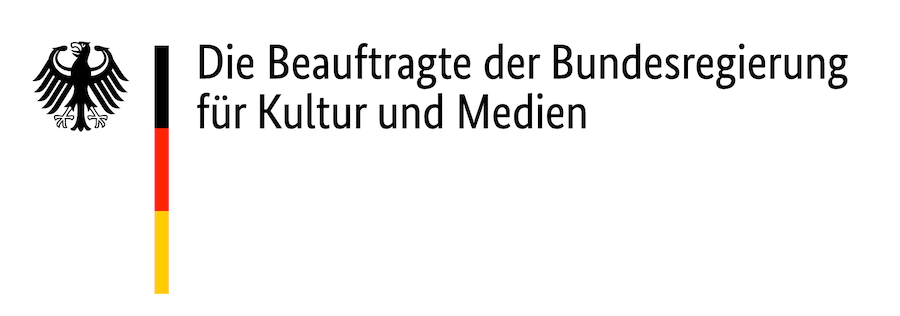

30.10. @20:00
Bitef teatar
Skver Mire Trailović 1 →
“Z. Tomažin and Flierl’s procedures bring witnesses to the edge of the mystical, when their voices separate from their bodies and sound textures begin to influence the materiality of space itself as guests, beautiful formations that change the course of time in it’s consistency. With procedural construction, they achieve that I no longer perceive sound simply by listening, but vibration also becomes a tactile experience that unravels the haptic component of sensation with the skin, this porous and rough membrane of the body, which in micro terms turns into a communication swarm of vibrations, molecules and stimuli. The performers, on the other hand, conveniently transform themselves into material creeping masses that reach beyond the human and thus unravel the web of relations in interdependence with the environment in which the body is inserted as the interface of experience. In this way, they actualize the insights of the empowered female body from Katalin Ladik’s heritage and transfer it to the field of modern feminist currents and new materialisms, in which they gain spectral phenomena, materialities, transcending the centrality of the human concept and exploring beyond the anthropocentric view of reality.”
The Hungarian-Serbian poet and performer Katalin Ladik is considered the “Yoko Ono of the Balkans” and a pioneer of noise and performance art in Southeastern Europe: With the “SoundBodyPoetry” of her radical body art performance UFO Party from 1969, she shook the artistic scene at the time and established methods of experimental voice work and physical performance already in the 1970s.
In their first collaboration, German sound dancer Jule Flierl and Slovenian choreo-vocalist Irena Z. Tomažin celebrate their shared interest in Ladik’s artistic position: a homage that blurs the boundaries between poetry, acting and experimental voice work, while continuing the two artists’ own research into the physical experience of language and the articulation of different layers of the voice.
Kondenz festival of contemporary dance and performance, October 23 – 30. 2022
Curators: Ana Dubljević and Marijana Cvetković
STATION Service for contemporary dance
Production and organization: Filip Perić
General management: Marijana Cvetković
PR; Monika Husar / KomunikArt
Financial management: Ana Ranković
Visual identity and layout: Mane Radmanović
Social networks: Ljiljana Ćuk
Web: Vladimir Jerić Vlidi
Photo and video support: Foto tim Magacina & Vladimir Opsenica
Financial support:



Partnership projects:

The Critical Practice programme is a mentoring programme oriented towards empowering discursive reflections on contemporary performing arts while enabling their breakthrough into the larger public. It offers the participants from different parts of Europe a chance to improve their critical writing skills accompanied with the skills for self-organisation, collective work and writing, critical discussions etc.
This cycle of the programme gathers 6 emerging authors: Jette Büchsenschütz, Anka Herbut, Fergus Johnson, Elena Novaktovits, Maša Radi Buh and Kasia Wolinska. They have participated to the festivals in Amiens (FR), Lisbon (P), Belgrade (Kondenz) and the summer school „Curating in Context“ in Struga (MK).
The mentors of the programme are Marijana Cvetković, Biljana Tanurovska Kjulavkovski and Ana Vujanović.
Critical Practice (Made in Yugoslavia) is the programme of Nomad Dance Academy and Station Service for contemporary dance.
The programme 2021-2024 is realised as a part of the apap – Feminist Futures project and is supported by the Creative Europe Programme of the European Union.
Cooperation is the key word!
This year, three contemporary art events organized during October officially appeal that it is necessary to cooperate, to be in solidarity with each other and to share the resources available to us. Together with Kondenz Festival, the October Salon / Cultural Center of Belgrade and the “Nadežda Petrović” Memorial / Nadežda Petrović Gallery, Čačak, want to show by example how important it is to nurture and strengthen cooperation between the public sector in culture and the independent cultural scene, and to spotlight the need for all artists and cultural workers to unite and not allow the divisions that are constantly imposed on them.
Through this initiative, each manifestation will include artists and colleagues from the other two festivals/exhibitions in their programs or will jointly organize certain segments of the program.
The teams of Kondenz, the October Salon and the “Nadežda Petrović” Memorial invite colleagues from all over the country, from public institutions or from the independent scene, to initiate joint projects, cooperation, exchange of knowledge, experiences and resources and speak about it publicly, promote common work and solidarity in culture.
59th October Salon
„Belgrade Biennial”
20.10 – 4. 12. 2022.
„to be better – (?) or where to find the truth?“
Art director: Zorana Đaković Minitti
kcb.org.rs
31. Memorial Nadežda Petrović
„Gestures, signs of life“
Art Gallery „Nadežda Petrović“, Čačak
1.10. – 13. 10. 2022.
Curators: Siniša Ilić i Bojan Đorđev
nadezdapetrovic.rs/memorijal


Photo by Katarina Popović
In the frame of this cooperation, we present the work of Katarina Popović, Dissemination 2, action (social sculpture / social choreogrphy, choreography of growth / plant as performer); 10 saplings of Ficus Čačak disseminated in cultural institutions, among them in the Cultural Center Magacin in Belgrade where Station Service for contemporary dance operates.
In 1971, three seedlings of Ficus Elastica Decora were planted in the open planter of the Čačak Cultural Center. Two of them persisted and now form a shared canopy spreading from the ground floor to the second floor and along the interior facade of the building. The plant’s roots go beneath the foundation of the building and they probably made it to the shallow subterranean water and ensured autonomy to the plant from human care. A ficus plant can live up to ten years, and in 2004, this one was declared the Category III – Natural Monument.
One sapling of this now fifty-one-year-old ficus grown to an incredible forty metres height, after several months of care in the artist’s studio, was brought to the Cultural Center Magacin as a living art work in the frame of cooperation between Kondenz Festival and Memorial “Nadežda Petrović“ in 2022. This action of dissemination raises the issue of how art field and space are equipped to foster living works and organisms, as well as whether and how we shall enjoy witnessing the choreography of their growth.





